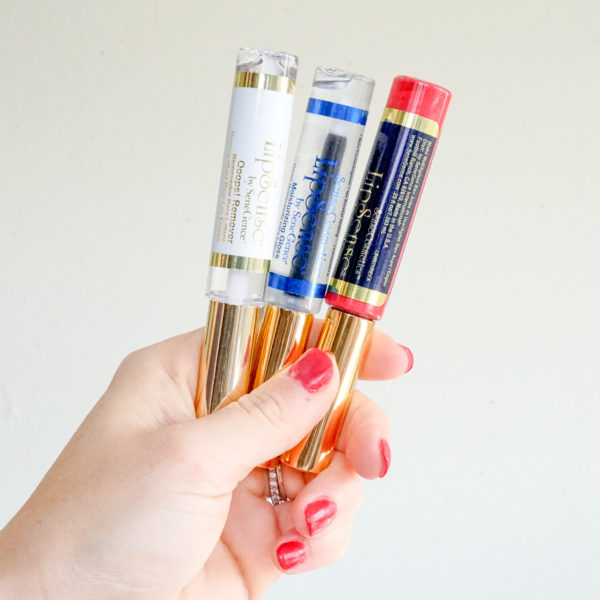In the age of the internet where we have access to the same items from sellers across the globe, not just the seller on our street, price can often be a significant driver of buying decisions. LipSense, post-out-of-stockalypse, isn’t immune from this behavior. Distributors have access to the same inventory and as a result, some believe the best way to compete is by offering the best discount and incentives to buy. The constant discount is a risky behavior that every leader will warn you about. Even the SeneGence policies and procedures state that offering regular discounts is a violation of your distributor agreement. Why all the fuss?
Note: we’re going to talk specifically about LipSense here, although this advice could be applied to pretty much anything bought and sold online – so small business owners everywhere, listen up!
FIRST, WE HAVE TO UNDERSTAND A BUYER’S MINDSET
If you look across nearly every culture in the world, people have a strong desire to be treated fairly (and to be perceived as fair to others). “Fair” when we’re talking about price means what is reasonable and justified in the market – what is legitimate.
SeneGence says a reasonable price to pay for LipSense is $25 per color (plus the cost of gloss and Ooops). Why? They’ve done extensive research on what customers are willing to pay, what other competitive products sell for, and the cost to make the products and compensate distributors and the company for their investments in R&D and sales, and that’s the price that’s been established. It’s fair, it’s reasonable. No one is going to feel “ripped off”, assuming the product works like it claims to work (and if it doesn’t, there’s a reasonable solution to ensure the customer doesn’t feel “taken” – the generous return policy).
UNFORTUNATELY, REGULAR DISCOUNTING ERODES PRICING LEGITIMACY
When was the last time you paid full price (~$5) for a case of Diet Coke at the supermarket? I can’t even remember. Every time it’s on my list and not on sale, I pass. Why? Because I know if I wait just a few more days, it will likely go on sale again and I can get that exact same case of Diet Coke for around $3. Why pay $2 more to have it today when I know the price will drop in a day or two?
Discounting the products you sell does the same thing – it changes what I perceive to be the “fair” value of the product. As a buyer, I feel taken advantage of when someone demands more than a product is worth. I’m a consumer with choices. I’ll choose not to buy something where the price is greater than the value. That case of Diet Coke is no longer worth $5 to me. It’s only worth $3.
A tube of LipSense costs $25. If you’re regularly offering it for 15% off, you’ve changed the value for your customers. It now is worth $21.25. Worse, you’ve trained your customers that $25 is an unreasonable or unfair price to pay.
YOUR CUSTOMERS THEN HAVE THREE OPTIONS
1 // They can choose not to buy at all. This is always a choice your customers have!
2 // They can wait a day or two. Your past behavior has told them that when one sale ends, the next will begin right after. It’s why I took myself off the Old Navy email list. I don’t need to be alerted to their sales if there’s always a sale! I love their jeans and used to pay $50 a pair for them. Now if I’m not getting at least 30% off, I’ll hold off on purchasing – but the jeans haven’t changed!
3 // They can buy from someone else. Facebook is full of Marketplace groups where someone is always selling at 15% off and offering all sorts of freebies to get someone to buy from them. If your customer thinks the price of $25 is unreasonable and they don’t want to wait for your next sale, they’re just going to go buy there. Maybe that’s how you even got some of your customers?
THE RESULT? A RACE TO THE BOTTOM
Not surprisingly, when all products were available for ordering again, Buy/Sell/Trade groups on Facebook transformed from ladies selling coveted colors at full retail to ex-distributors unloading excess inventory for barely more than what they paid wholesale for it. Then buyers started asking for even lower prices – and those pages were flooded with used tubes (ew) and fake LipSense (double ew) which was the only way to make a profit at the price some customers demanded.
The cycle never ends! I’ve seen ladies sell at a loss in an attempt to keep customers, and it totally baffles me. How is that good for business?!
So you’ve trained your customers to always be looking for a deal and they spot an even better deal, but you want them to buy from you. You’re left with two options: Either risk losing a customer or offer a bigger discount. Spoiler alert: The 2nd choice is rarely advantageous for long.
SO WHAT CAN I DO INSTEAD?
STAY TUNED FOR PART 2 coming tomorrow! [UPDATE: Part 2 is live HERE]
